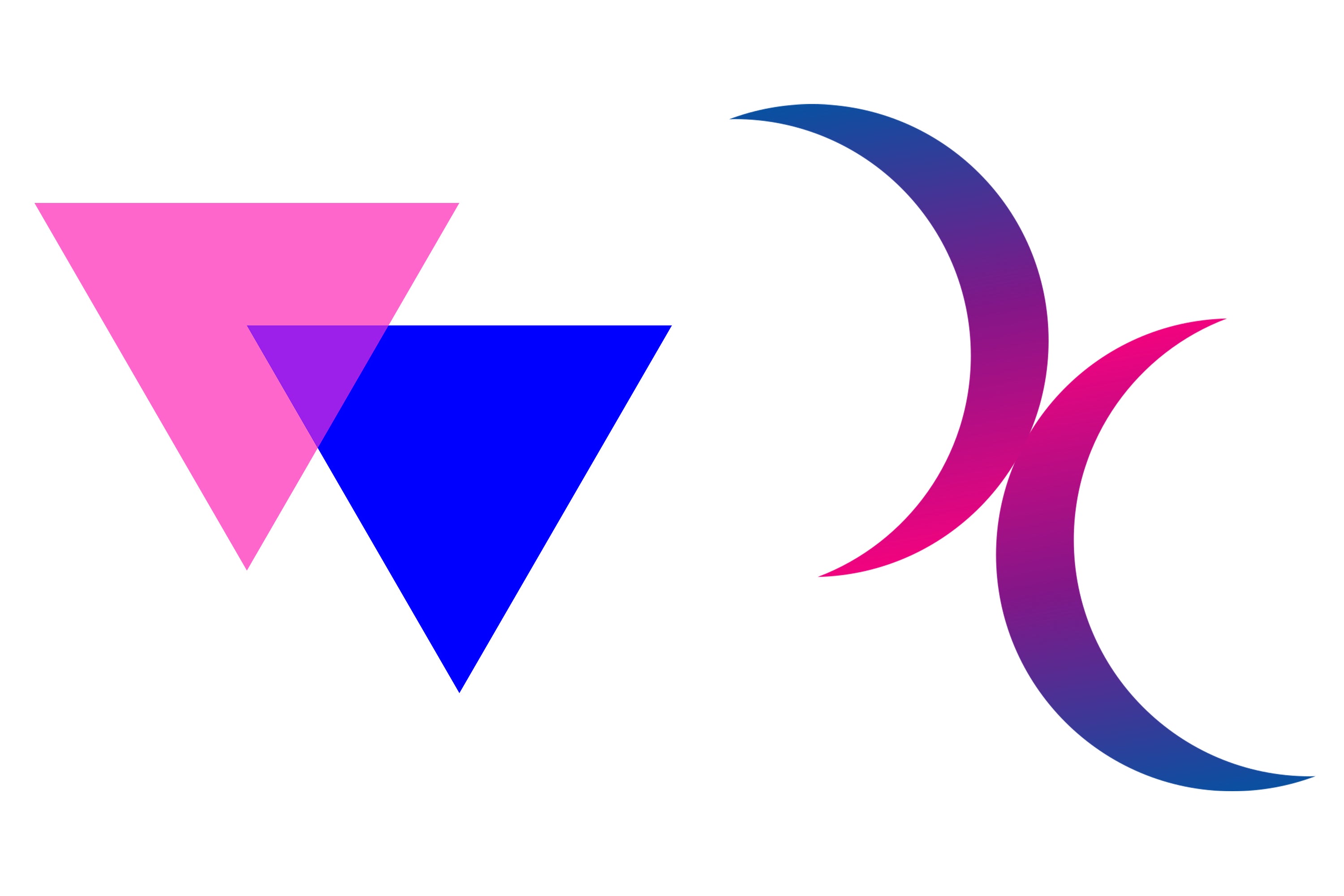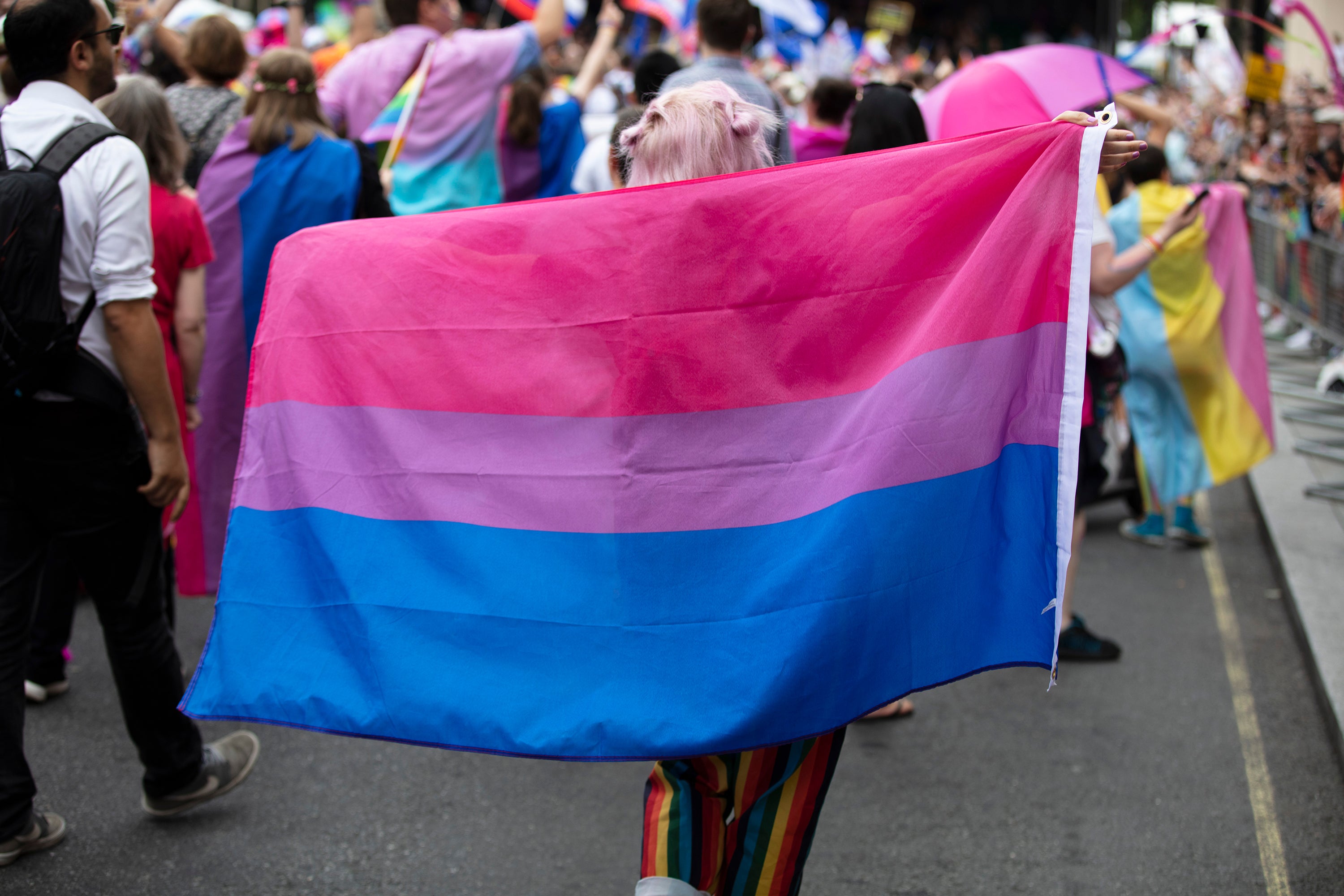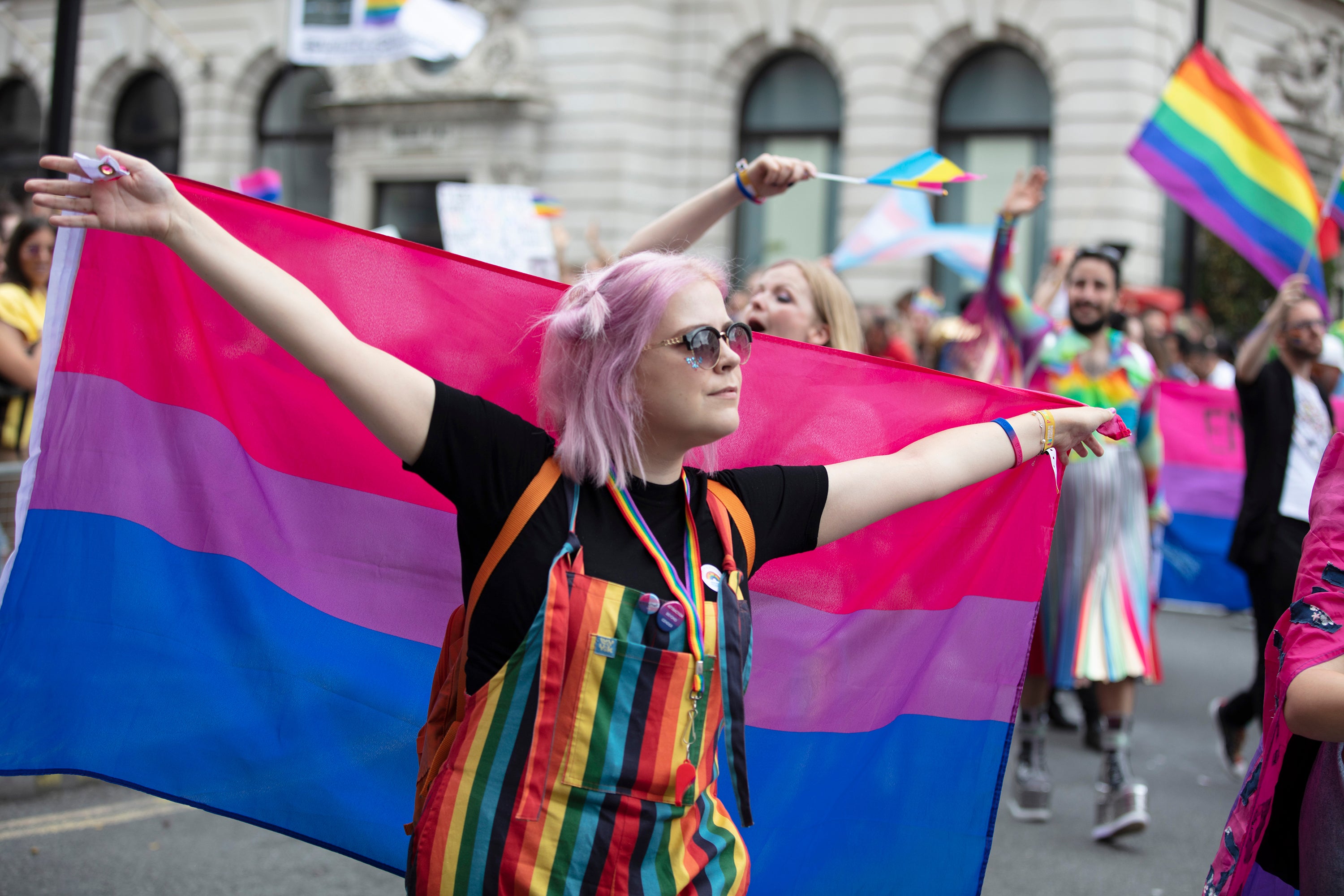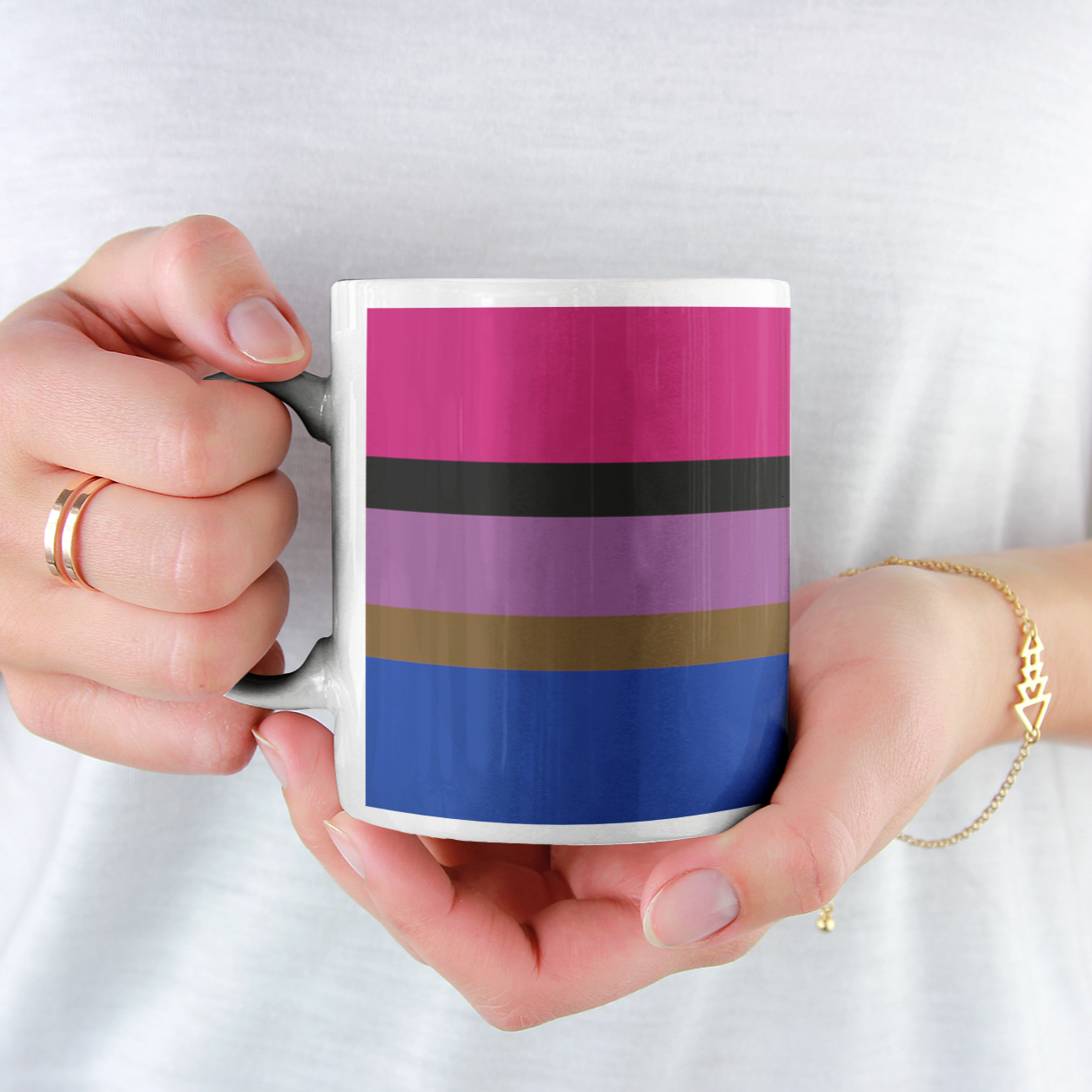Ink Drop / Shutterstock.com
What is Bisexuality?
Bisexuality refers to sexual attraction to more than one gender. Bisexuality is inclusive of all genders, so the people that a bisexual person is attracted to don't always identify within the male/female binaries and can include people from right across the gender spectrum.
What is the Difference between Bisexual and Pansexual?
Bisexuality is the attraction to more than one gender whereas pansexuality refers to sexual attraction to all genders and/or attraction regardless of gender. However, whilst they are separate identities, it’s not unusual for someone to identify with both of these sexualities at different points in their lives or to refer to themselves as one identity over the other for personal reasons, such as learning about one sexuality first and forming a connection with that community.
As with all aspects of the LGBTQIA+ community, it's important to listen to the individual and respect how they self-identify.
What Colour is the Bisexual Flag, and What Do The Colours Mean?
The bisexual flag was created in 1998 by Michael Page and is made up of three colours in horizontal lines with the middle stripe being slightly thinner. Pink is at the top, then purple in the middle, and blue at the bottom. The pink was originally meant to represent same sex attraction, with the blue representing opposite sex attraction. The purple in the middle was to represent bisexuality, a combination of both colours, signifying attraction to both sexes. This definition of bisexuality (as the attraction to both sexes) is rejected by most people today, although it still feeds a lot of common misconceptions about bi people.

Some people also say that the colours on the flag represent the two genders, with purple once again mixing the pink and blue to show how bisexuality refers to attraction to more than one gender. This interpretation of the flag is also a little outdated, with it being widely known now that there are more than two genders.
The flag has also been expanded on in recent times to include both a black and brown stripe (see the Inclusive Bisexual Pride Flag mug below), to represent bisexual people of colour.
Bisexual Symbols
Page's flag design was inspired by the 'biangle', an icon comprised of interlocking triangles in pink, purple, and blue, which was used by some bi groups in the US. The symbol expanded on the pink triangle, the well-known symbol of the gay community.

In Germany and other European countries, where the triangles have a notorious history of being used to mark out members of the LGBTQ+ community in public during Hitler’s time in power, the crescent moons were used to step away from the potentially triggering images of the triangles.
Famous Bisexual People
Bisexuality has been recorded as far back as Ancient Greek and Roman times, when the gender of someone’s sexual partner was not thought to be that important. Many men were known to have sexual relationships with both men and women, with less of the stigmas that came to societies around the world in years to come.
As time went on and societal standards changed, LGBTQ+ people were not able to live as openly as they do in many countries today. Even so, there have been many notable bisexuals over the years, including:
- Megan Fox, actress
- Alexander the Great, King of Ancient Greece
- Drew Barrymore, actress
- Alan Cumming, actor
- Frida Kahlo, painter
- Oscar Wilde, playwright
- Angelina Jolie, actress
Of course, for people like Alexander the Great, we can’t know for sure. However, historical records for ancient figures and accounts of friends and family for more recent celebrities help to give a more accurate picture of people’s sexualities who couldn’t express it openly during their lifetime.
What Does It Mean to Be Bisexual?
We spoke to bisexual people about what their sexuality means to them.
Dan, 25, Bournemouth, UK
“I didn't consider myself to be bi until after a lot of soul searching. But soon I found myself part of a community that faces a lot of unfair, pathetic criticism. For me, being bi is about acceptance, diversity and recognising that difference is beautiful. It's a wonderful place. I see it as very natural actually.”
Nova, 30, Portland, USA
“It means something different to a lot of people, but I viewed it as a rainbow energy that could appear as any other sexuality. Everyone can appear as us. [It offers] a potential to have many crossover experiences.”

Misconceptions Around Bisexuality
Bisexual people, like many other LGBTQ+ groups, have faced plenty of discrimination over the years, from both inside and outside of the queer community. There is often the false idea that bisexual people are indecisive, greedy, or promiscuous because they are emotionally or sexually attracted to two or more genders.
Although many LGBTQ+ groups are making efforts to include bisexual people more nowadays, bi-erasure and biphobia are still often prevalent. Bi erasure refers to the belief that bisexuality simply does not exist, often tied up with the idea that bi people are experimenting with their sexuality and not committing to one gender. Biphobia is a generalised term for any aversion or negative attitudes towards bisexual people.
Resources for Bisexual People
Because of the specific issues that bisexual people face and to help people find other bisexual people to connect with, there is a range of bisexual groups and communities available in the UK. If you’re a bisexual person wanting to find support or community resources, or just for anyone who wants to learn more about the bisexual community, here are some handy resources to get started:
-
Bi Pride UK: a national bisexual community whose mission is “to create spaces where people who experience attraction beyond gender can be freely visible and celebrate themselves and their identities”.
-
BiCon: the UK’s main bisexual gathering, hosting regular events for bisexual people (although fewer events have been possible recently due to COVID-19).
- Biscuit: a working class woman led activist org fighting biphobia & misogyny.
-
Mind: offers various mental health resources tailored to bisexual people.
-
MeetUp: a great app that can help you find local community groups in your area. Simply search for ‘bisexual’ or ‘LGBTQ+’ and see what groups might interest you.
- Bi's of Colour: a welcoming supportive group for bisexuals who I.D as Black Minority Ethnic or Mixed Heritage
- Bi Survivors Network: a support and advocacy network for bi+ survivors of domestic/sexual violence.
- Bi Community News: Britain's bisexual magazine, published in Manchester.
Is there anything else you'd like to know about Bisexuality that we've not covered in this guide? Let us know in the comments and we'll answer your questions!
_____________________________________________________________________________________

This article was written by Rachael Davies. Rachael is a freelance journalist and writer who specialises in LGBTQ+ issues, sustainability, and technology.



0 comments